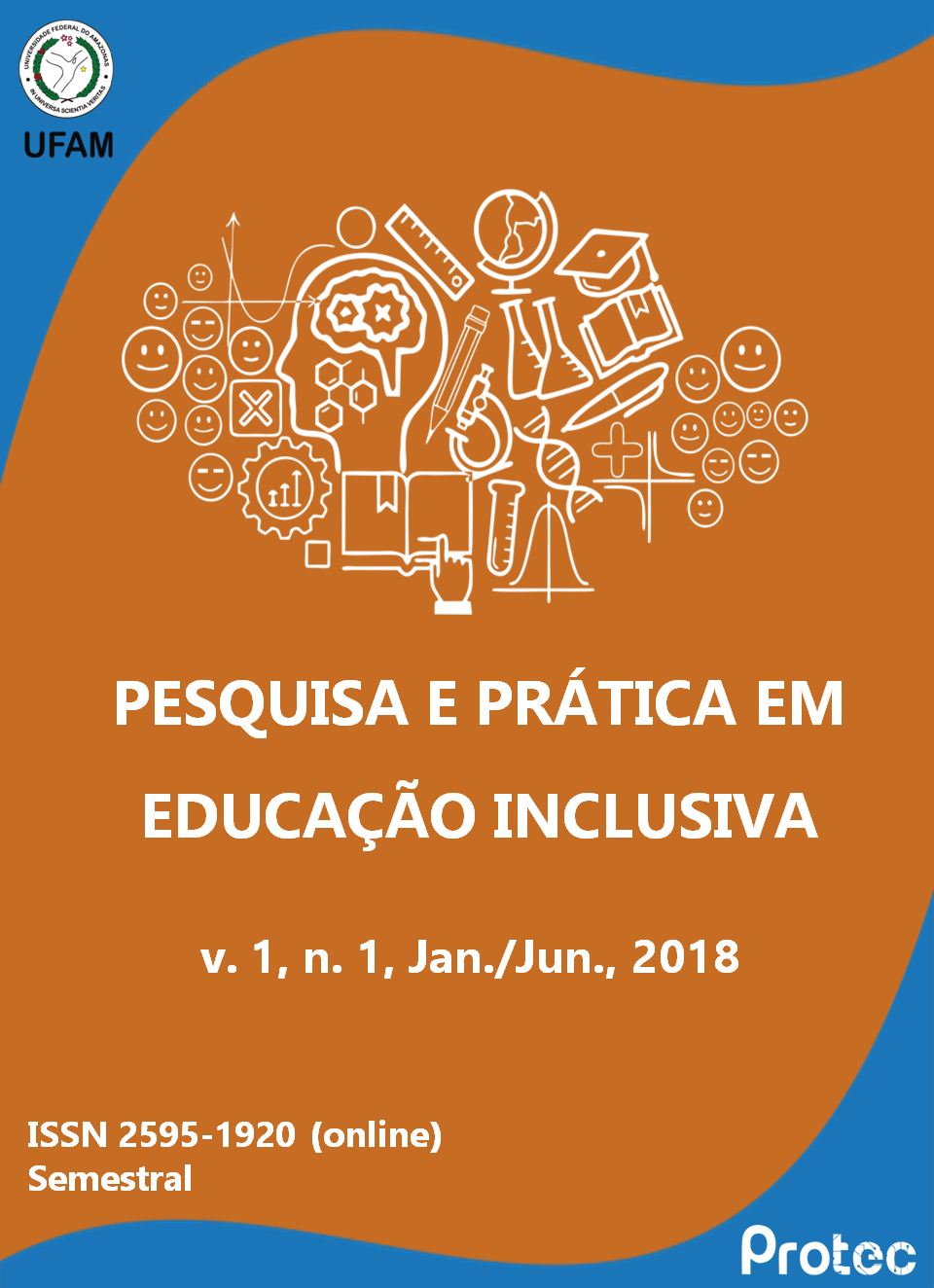O SERVIÇO DE ESTIMULAÇÃO PRECOCE NO BRASIL APÓS A POLÍTICA DE INCLUSÃO
Abstract
Early Stimulation is a service that aims to enhance the development of children in the first three years of life who were born with some disability. Prior to the Special Education Policy in the Perspective of Inclusive Education (2008), this service was offered mainly in educational spaces, backed by the Education Guidelines for Early Stimulation (1995). This article has the purpose of analyzing the academic productions in the area of Early Stimulation in our country, ten years after the Inclusion Policy implemented in 2008, making a comparative of productions before and after the implementation of said Policy. The methodology used was the systematic review of the literature on academic production in the area of Early Stimulation in the last twenty years. In 2018, an electronic search was carried out in the following databases: SciElo, Google Academic and CAPES Portal, making a survey of the publications from 1998 to 2018. It was concluded that there was a significant increase of productions on this subject in the last ten years in comparison to the previous decade, which means a gain for this area of study and for this target audience, since this program should be valued and expanded, in the age group that is considered the most important for its development.
Downloads
References
_______ .Ministério da Educação e do Desporto. Secretaria de Educação Especial. Diretrizes educacionais sobre Estimulação Precoce: o portador de necessidades educativas especiais / Secretaria de Educação Especial - Brasília: MEC, SEESP,1995. 48 p. (Série Diretrizes; 3).
________. Diretrizes de Estimulação Precoce: Crianças de Zero A 3 Anos com Atraso no Desenvolvimento Neuropsicomotor decorrente de Microcefalia / Ministério Da Saúde, Secretaria De Atenção À Saúde. – Brasília: Ministério Da Saúde, 2016. 123P.
_______. Ministério da Saúde. Secretaria de Atenção à Saúde. Protocolo de atenção à saúde e resposta à ocorrência de microcefalia relacionada à infecção pelo vírus Zika Ministério da Saúde, Secretaria de Atenção à Saúde – Brasília: Ministério da Saúde, 2015. 49p.. : il. Modo de acesso: www.saude.gov.br/svs ISBN 1. Vírus Zika. 2. Plano. 3. Atenção à Saúde. I. Título. http://portalsaude.saude.gov.br/images/pdf/2015/dezembro/14/PROTOCOLO-SAS-MICROCEFALIAZIKA-vers--o-1-de-14-12-15.pdf. Acesso em 07 Nov. 2016.
_________.Nota Técnica nº 2, de 04 de agosto de 2015. Orientações para Organização e Oferta do Atendimento Educacional Especializado na Educação Infantil. Disponível em: http://portal.mec.gov.br/index.php?option=com_docman&view=download&alias=18047-ntc-02-orientacoes-paraorganizacao-oferta-do-aee-na-educacao-infantil&Itemid=30192. Acesso em 20 Ago. 2017
_________.Plano Nacional de Enfrentamento à Microcefalia. Brasília: Ministério Da Saúde, 2015. Disponível em: http://portalarquivos.saude.gov.br/images/campanhas/dengue2015/Broadside_Microcefalia_20x28_V2.pdf. Acesso em 23 Ago. 2017.
__________. Política Nacional de Educação Especial na Perspectiva da Educação Inclusiva (2008
__________. Ministério da Educação e do Desporto. Secretaria de Educação Fundamental. Referencial curricular nacional para a educação infantil / Ministério da Educação e do Desporto, Secretaria de Educação Fundamental. — Brasília: MEC/SEF, 1998. Volume 1.
Decio et al Microcephaly and other Zika virus related events: the impact on children, families and health teams Ciênc. saúde coletiva, Rio de Janeiro , v. 21, n. 10, p. 3297-3302, Oct. 2016 . Available from http://www.scielosp.org/scielo.php?script=sci_arttext&pid=S1413-81232016001003297&lng=en&nrm=iso. Access on 06 Nov. 2016

Downloads
Published
How to Cite
Issue
Section
License
Esta revista oferece acesso livre imediato ao seu conteúdo, seguindo o princípio de que disponibilizar gratuitamente o conhecimento científico ao público proporciona maior democratização do conhecimento. Os direitos autorais são cedidos à Revista Eletrônica Pesquisa e Prática em Educação Inclusiva.
Declaramos que todos os artigos submetidos ao periódico Pesquisa e Prática em Educação Inclusiva são originais e não foram enviados para publicação em qualquer outro meio, como um todo ou uma fração. Também declaramos que, depois de ser publicado pela Revista Pesquisa e Prática em Educação Inclusiva (UFAM), um artigo não será submetido a outra revista dentro de duas edições. Depois desta vez, nossa revista transfere os direitos de publicação para os autores, com uma autorização concedida pelo Conselho Editorial.




